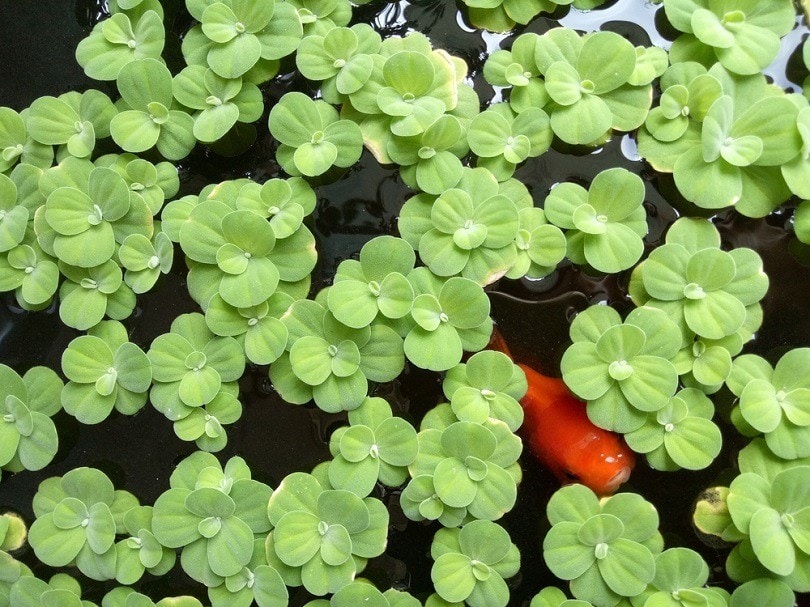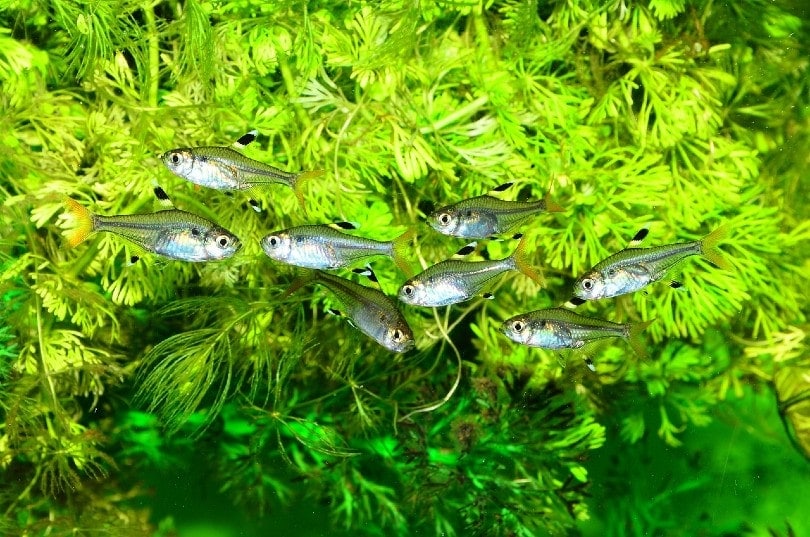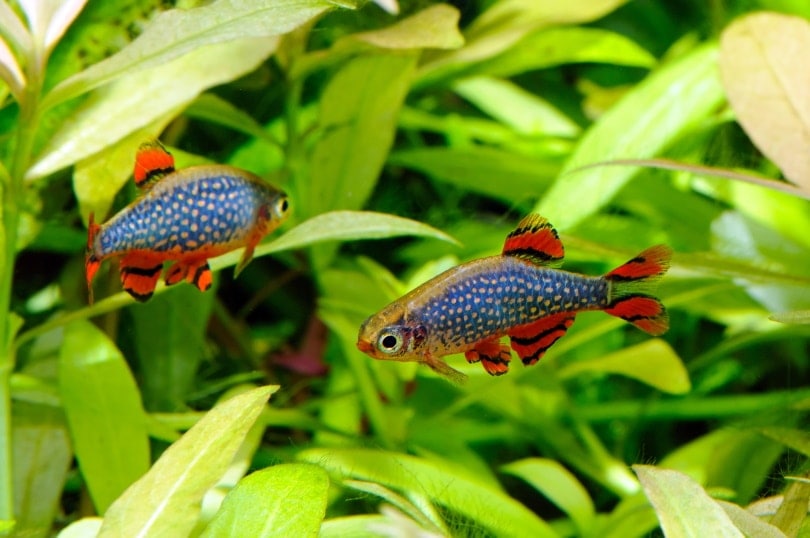8 Great Tank Mates for African Cichlids (With Pictures)
Updated on
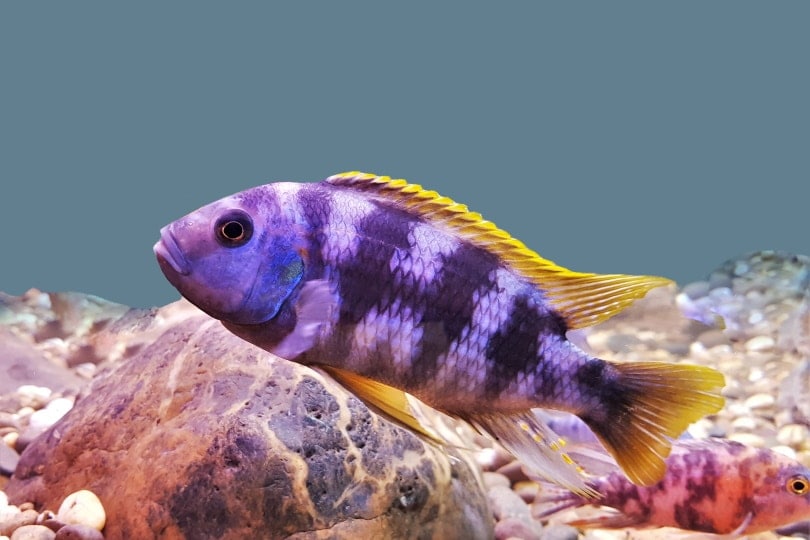
African Cichlids provide variety and color to an aquarium. They are also easy to take care of, allowing you to spice up your aquarium without extra work. However, they are known for being quite aggressive, which makes it difficult for them to be housed with tank mates.
Keeping the fish with others requires setting up the correct tank environment. Providing several rocks and other places for the fish to hide is essential. This will help prevent them from feeling threatened and aggressive. A safe fish is a peaceful fish.
Of course, you also have to pick the correct tank mates. In this article, we help you do just that.
- Tank Mates for African Cichlids
- Qualities of a Good Tank Mate
- African Cichlids Living Preferences in the Aquarium
- Aggressive Behaviors
- Benefits of Having Tank Mates for African Cichlids in Your Aquarium
The 8 Tank Mates for African Cichlids
1. Clown Loaches (Botia Loches)
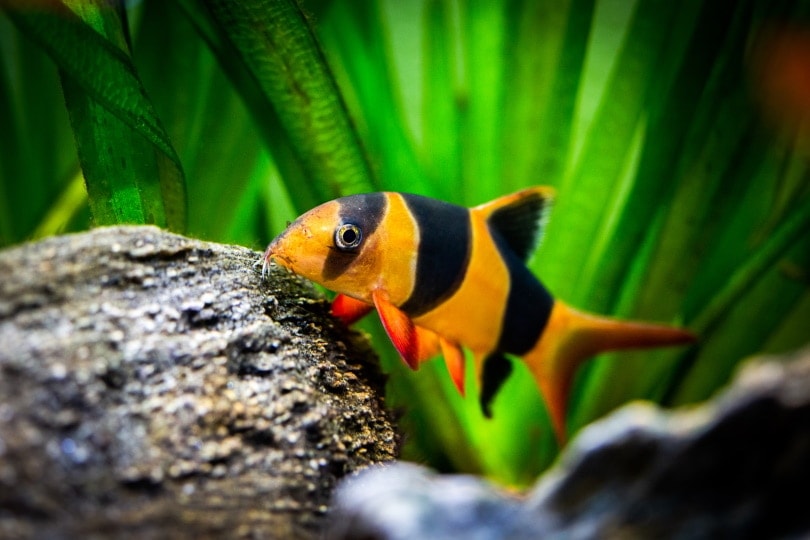
| Size: | 4 ½ inches |
| Diet: | Bottom feeders |
| Minimum tank size: | 75 gallons |
| Care level: | Moderate |
| Temperament: | Somewhat aggressive |
The Clown Loach is a semi-aggressive fish, like the African Cichlid. Because of their similar natures, they can generally hold their own when put up against African Cichlids. They also like rocks with plenty of places to hide, so you’ll need to ensure that there are enough hiding spots for everyone. When provided with the opportunity to hide, that’s typically what they decide to do. Otherwise, they may get a bit aggressive.
As bottom feeders, they usually stay toward the bottom of the tank. They are predatory toward shrimp and similar fish, so you won’t be able to have any of them in your tank with African Cichlids.
2. Red Rainbow Fish

| Size: | 4 inches |
| Diet: | Omnivores |
| Minimum tank size: | 50 gallons |
| Care level: | Easy |
| Temperament: | Docile |
The Red Rainbow Fish is often a suitable tank mate for a Cichlid as long as your tank is big enough to keep them apart. They are unable to defend themselves against Cichlids and can be eaten! However, if you provide them with enough room, the fish generally leave each other alone to some degree.
These omnivores typically do fine with regular fish pellets. They aren’t that picky, so if you’re looking for an easy fish to care for while you concentrate on your African Cichlid, the Red Rainbow Fish is a suitable option.
3. Red-Tail Shark
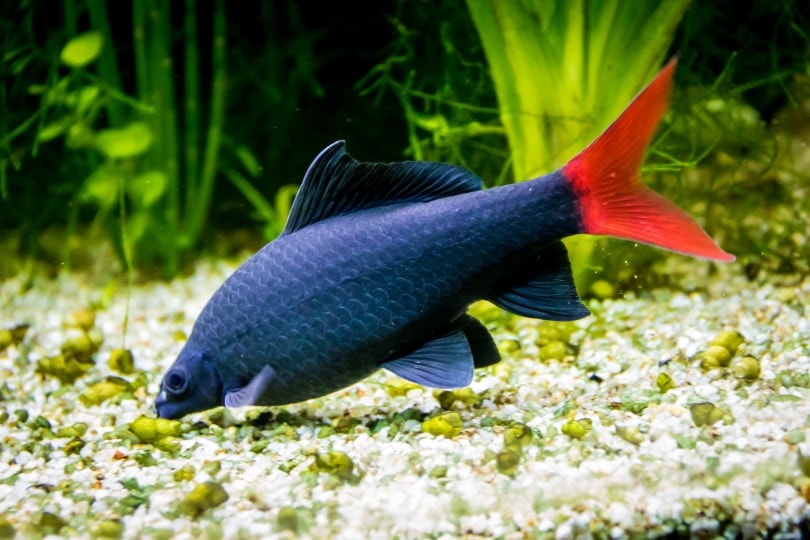
| Size: | 4 inches |
| Diet: | Omnivorous |
| Minimum tank size: | 55 gallons |
| Care level: | Moderate |
| Temperament: | Semi-aggression |
The Red-Tail Shark is a unique fish that stands out in most aquariums. They are entirely black except for their red tail. They are also a common freshwater shark that doesn’t require extensive amounts of care.
However, you shouldn’t let the fish fool you. As you might expect from a shark, they are semi-aggressive and can hold their own in most situations. They will attack docile fish and even more aggressive fish.
For this reason, they do best in tanks with other fish that can hold their own. This includes fish like the African Cichlids. Your tank must be large enough for both fish since the Red-Tail Shark is territorial.
4. Giant Danios
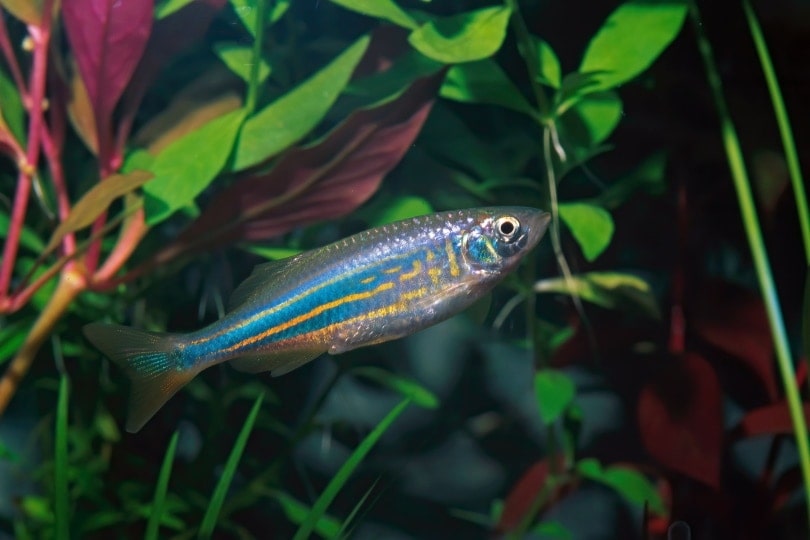
| Size: | 4 inches |
| Diet: | Omnivorous |
| Minimum tank size: | 30 gallons |
| Care level: | Easy |
| Temperament: | Docile |
While Giant Danios are docile and not nearly as aggressive as other fish, they are pretty large. This allows them to stand up to African Cichlids or ignore them. You must choose larger Danios since smaller ones will get eaten. They also prefer the bottom and middle of the tank, which allows them to stay separated from the African Cichlids.
They like vegetated areas, as these provide them with extra cover. Ensure plenty of plants are at the bottom of your tank for them to hide in. Otherwise, they may become stressed and prone to attacks.
5. Plecos
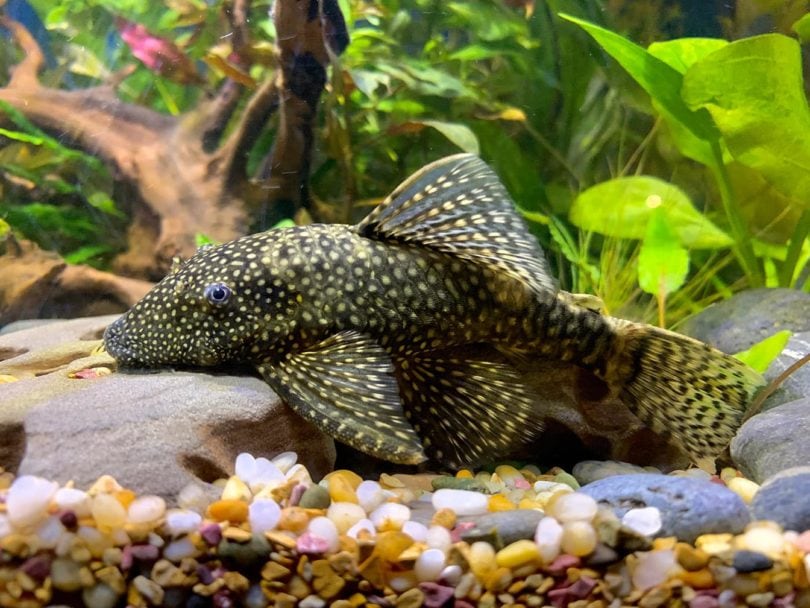
| Size: | 24 inches |
| Diet: | Bottom feeders |
| Minimum tank size: | 150 gallons |
| Care level: | Easy |
| Temperament: | Docile |
Plecos are bottom feeders and prefer to hide similarly to African Cichlids. However, they are enormous, so you can expect African Cichlids to leave them alone without much difficulty. It is essential to provide them with plenty of rocks and caves since the hiding spots can get quite crowded with them and African Cichlids.
These bottom-feeders prefer to stay at the bottom of the tank and suck up food from there. This doesn’t interfere with the African Cichlids, who tend to roam around the top and middle of the tank. For this reason, there are less likely to be any aggressive behaviors.
6. African Red-Eyed Tetra
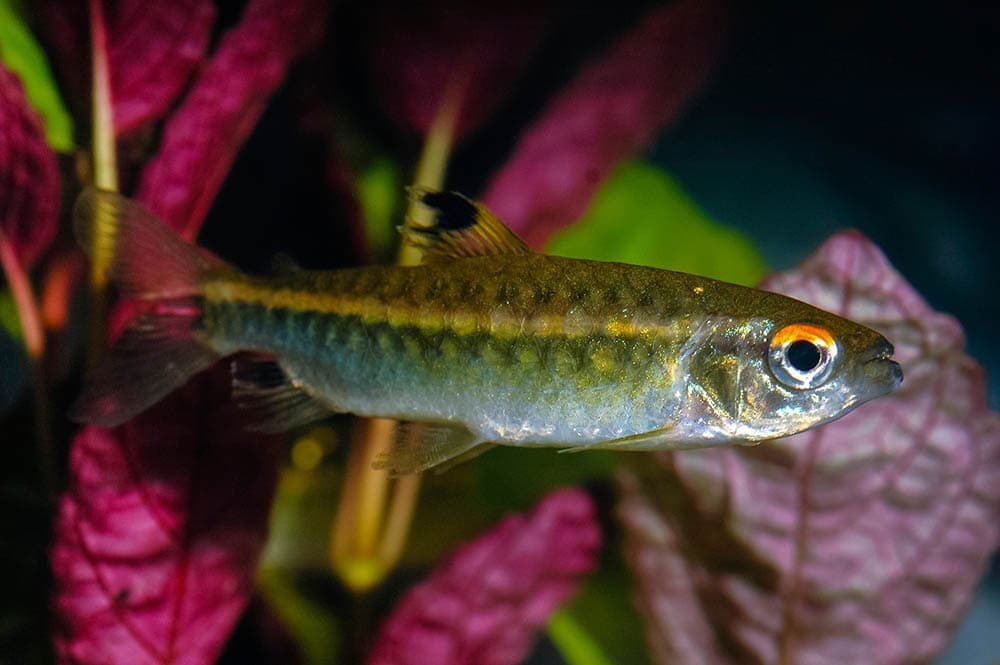
| Size: | 4 inches |
| Diet: | Omnivorous |
| Minimum tank size: | 50 gallons |
| Care level: | Moderate |
| Temperament: | Territorial |
The African Red-Eyed Tetra can get along with the African Cichlid if they have enough room to swim around. This is a more difficult fish to keep with the African Cichlid, so be prepared for a bit of work. If the tank is large enough, there shouldn’t be too much to worry about. Both fish can be a bit uptight about others in their space, and they must have enough space of their own.
Beyond their similar territorial natures, African Red-Eyed Tetras thrive in the same water conditions and on the same food as the African Cichlid. Therefore, they can make easy tank mates. You won’t have to adjust the water parameters to care for them.
7. Leopard Bushfish

| Size: | 7 inches |
| Diet: | Carnivores |
| Minimum tank size: | 50 gallons |
| Care level: | Moderate |
| Temperament: | Aggressive |
The Leopard Bushfish is known for their aggressive tendencies. However, this makes them a good match for the African Cichlid, as they won’t put up with much of their territorial behaviors. Therefore, they make good tankmates.
These fish are picky eaters, which makes them more challenging to take care of. They require live or frozen food in most cases. Your African Cichlids will likely want this food when it is introduced, which will increase the maintenance of your aquarium overall.
Leopard Bushfish are carnivores, and fish flakes don’t contain enough protein to keep them healthy.
8. Scavenger Catfish
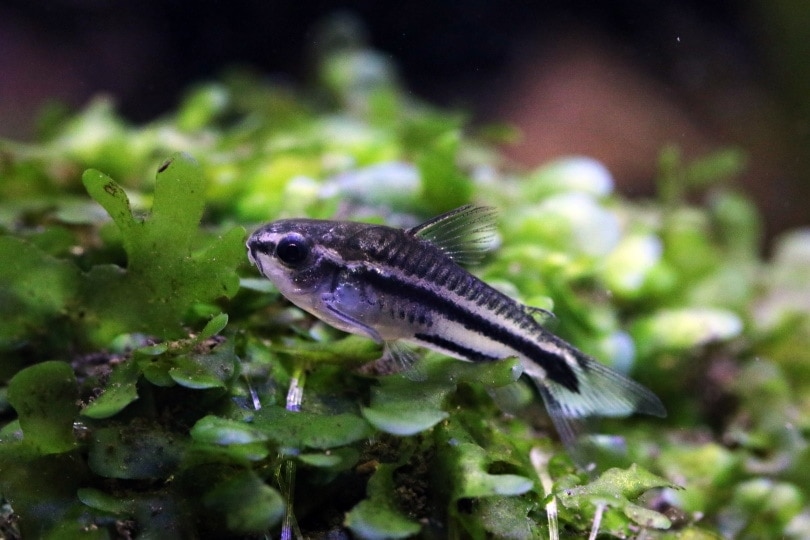
| Size: | 10 inches |
| Diet: | Carnivores |
| Minimum tank size: | 55 gallons |
| Care level: | Easy |
| Temperament: | Docile |
Scavenger catfish hang around in caves and on rocks, scavenging what they can from the bottom. Because they prefer the bottom of the tank, they generally stay out of the way of fish that prefer to hang out higher. If this species and the African Cichlid come across each other, this catfish is too large to be bothered. This is one reason they are excellent fish to choose as tank mates.
Scavenger catfish like to eat fish flakes but also enjoy sinking catfish pellets. You’ll likely need to feed them the sinking pellets, as the Cichlids will eat most of the floating flakes. The pellets will help them stay in the optimal body condition, which makes them able to withstand the aggression of the African Cichlids better.
What Makes a Good Tank Mate for African Cichlids?
The African Cichlid is territorial and aggressive. However, they are also attractive, with brilliant patterns and colors. It can be challenging to find tank mates that fit with them due to their high level of aggression.
Your goal should be to choose fish that are equally as aggressive. It is vital that they can hold their own against the African Cichlids, or they may end up as dinner.
Of course, you also want to ensure that the tank mates you choose prefer the same water temperature. Otherwise, you’ll be balancing the water parameters constantly. It is much easier when all the fish enjoy the same conditions.
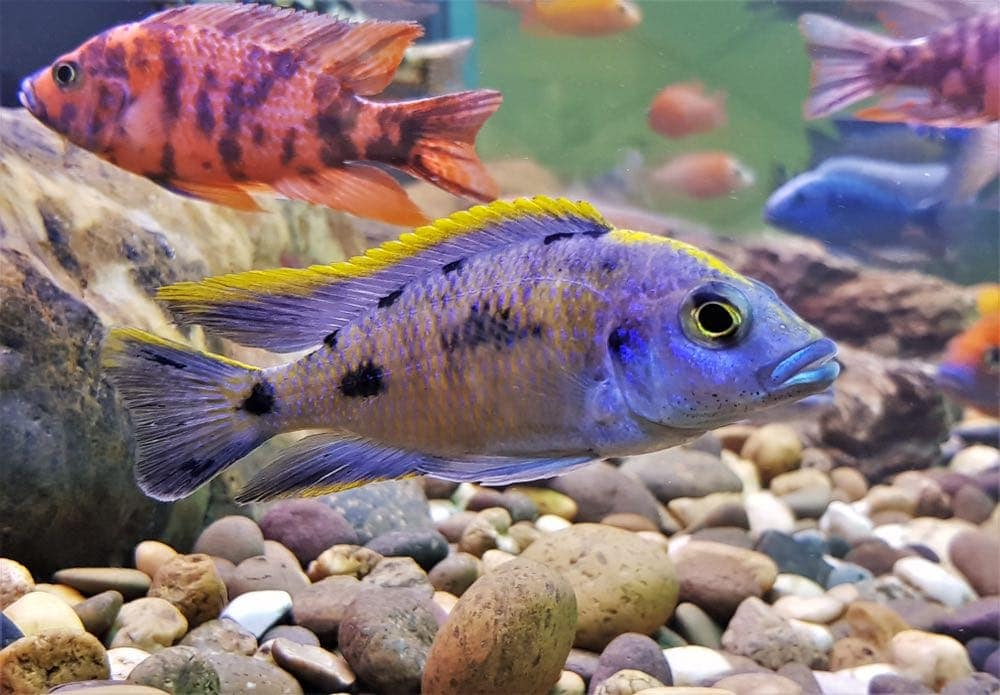
Where Do African Cichlids Prefer to Live in the Aquarium?
African Cichlids typically roam near the top and middle of the tank. They love to hide and spend much of their time in caves and similar hiding spots. If there are other fish in the tank, be sure to provide plenty of hiding places for them.
Since this species tends to roam the whole tank, they do best with bottom feeders. They don’t spend much time at the bottom, so they typically do fine with fish that live below them.
Water Parameters
The African Cichlid prefers hard water. They do not like fast-flowing water because they’re naturally from lakes. They need movement in the water, but not more than what the typical bubbler will create.
They prefer water that is around 78 to 82 degrees Fahrenheit. It should have a pH level of around 7.8 to 8.6.

Size
African Cichlids can get as long as 6 inches, though many will be much smaller. It takes them a bit to grow to their full size. They need plenty of space to swim around and multiple hiding spots. They need at least a 30-gallon tank and more if you want to pair them with other, bigger fish.
Since many of the suitable tank mates for African Cichlids are large, you will need quite a big tank to house all of them.
Aggressive Behaviors
The African Cichlid is known for their aggressive nature. They are territorial and will attack nearly any fish that enters their space. Therefore, the only tank mates that they can be housed with are those that are either equally aggressive or too large to care about an African Cichlid.
The 2 Benefits of Having Tank Mates for African Cichlids in Your Aquarium
1. Increase Liveliness
While African Cichlids are pretty and decently active, they may spend most of their time hiding. Adding other species can make the environment more attractive and colorful.

2. Keep things clean
Many bottom feeders can be kept with African Cichlids. They can help you keep your tank clean by filtering out debris on the bottom and controlling the algae.
Conclusion
The African Cichlid is an aggressive fish, and it is often thought they can’t be kept with others. However, there are a few species that they can be suitably housed with. These include bottom feeders and fish that are just as aggressive as them. Choosing bigger fish that can hold their own is crucial since the African Cichlid will likely attempt to bother them at least once or twice.
Selecting a fish to go with the African Cichlid isn’t so much a matter of choosing a docile species. You should focus on a species that can fight with the African Cichlids as necessary. Bottom feeders are also suitable because they’ll avoid the most aggressive Cichlids.
Related Read:
Featured Image Credit: Arunee Rodloy, Shutterstock



